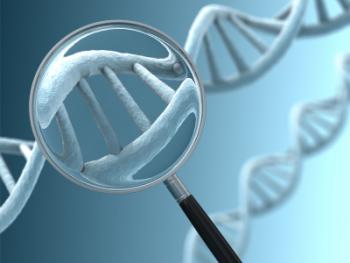Significance
A large percentage of the human genome is composed of repetitive elements that are relics of past viral infections. Expression of these human endogenous retroviruses (HERVs) is associated with a variety of diseases, including cancer; however, causality remains to be established. A subset of these HERVs express proteins with reverse transcriptase (RT) activity. This has inspired several clinical studies of antiviral RT inhibitors for indications in which HERV expression is associated with disease. We have determined the X-ray structure of an HERV reverse transcriptase. This structure clarifies the reasons for poor inhibition by 3TC (lamivudine) and lack of inhibition by nonnucleoside inhibitors nevirapine and efavirenz. This structure will enable the design of selective HERV-K RT tools for drug target validation.
Abstract
Human endogenous retroviruses (HERVs) comprise nearly 8% of the human genome and are derived from ancient integrations of retroviruses into the germline. The biology of HERVs is poorly defined, but there is accumulating evidence supporting pathological roles in diverse diseases, such as cancer, autoimmune, and neurodegenerative diseases. Functional proteins are produced by HERV-encoded genes, including reverse transcriptases (RTs), which could be a contributor to the pathology attributed to aberrant HERV-K expression. To facilitate the discovery and development of HERV-K RT potent and selective inhibitors, we expressed active HERV-K RT and determined the crystal structure of a ternary complex of this enzyme with a double-stranded DNA substrate. We demonstrate a range of RT inhibition with antiretroviral nucleotide analogs, while classic nonnucleoside analogs do not inhibit HERV-K RT. Detailed comparisons of HERV-K RT with other known RTs demonstrate similarities to diverse RT families and a striking similarity to the HIV-1 RT asymmetric heterodimer. Our analysis further reveals opportunities for selective HERV-K RT inhibition.
Fifty-four percent of the human reference genome is comprised of repeating sequences, the “repeatome.” There is evidence that some of these repetitive elements have important functions during development (1) and emerging evidence that such repeats may contribute to disease processes (2, 3). Among these, human endogenous retroviruses (HERVs) are a class of repetitive elements that account for 8% of the genomic DNA with a genetic organization that follows the pattern of long terminal repeat retroviruses of which HIV-1 is a well-known distant family member (4). HERVs are derived from exogenous retroviral infections of germline cells, which are now propagated by normal Mendelian inheritance. Most of the copies of HERV elements in the genome have accumulated inactivating mutations and none are known to propagate replication-competent viruses in humans. However, some of the more recently integrated HERVs contain intact genes that are transcribed and translated into proteins, including reverse transcriptase (RT) (5). Since disease-associated RT activity can arise from diverse sources [exogenous viruses (6), long-interspersed nuclear elements, or a variety of HERVs (7)], pharmacologically specific tools are required to dissect repeat biology and attribute disease causality.
HERVs play a role in early development by rewiring the gene regulatory network of the preimplantation embryo (8). HERV expression appears to be a hallmark of the undifferentiated state, the acquisition of phenotypic plasticity, and stem cell character (9): traits associated with aggressive cancer and poor patient outcomes. HERV expression is tightly controlled in normal adult tissues but is reported to be aberrantly expressed in cancer (10), inflammatory diseases (11), neurological diseases (2), aging (12), and viral disease (13, 14). There are numerous reports of up-regulation of HERV-K (HML-2 [human endogenous MMTV-like] subtype)-derived messenger RNA (mRNA) and protein in a variety of solid and liquid tumor types (3, 5, 15–17). The disease association with endogenous retroviruses and the expression of HERV-encoded proteins during disease states suggests that antiretroviral therapy could be explored in the management of these conditions.
Although direct inhibition of HERVs by HIV-1 RT inhibitors has been reported (18–20), there has been no unambiguously positive clinical trial outcome with these inhibitors in non-HIV indications to date. Several clinical studies (https://clinicaltrials.gov/) are completed or on-going that employ various marketed combination antiviral products, including RT inhibitors, for the treatment of cancer, bone loss, primary biliary cholangitis, Aicardi-Goutières syndrome, psoriasis, multiple sclerosis, Alzheimer’s disease, and amyotrophic lateral sclerosis (ALS). In some of these studies HERV RTs are the proposed therapeutic target. However, the level of HERV RT target engagement that can be achieved with these HIV drugs is unclear and may be insufficient; thus, there is a need for more potent selective HERV RT inhibitors to test therapeutic hypotheses.
To facilitate the development of HERV-K RT inhibitors, we determined the crystal structure of HERV-K HML-2 RT as a ternary complex with double-stranded DNA (dsDNA) and dNTP at 2.6-Å resolution. The structure reveals that this enzyme has a striking similarity to HIV-1 RT, even including the formation of an analogous asymmetric dimer. Interestingly, HERV-K RT is a homodimer, whereas HIV-1 RT is a heterodimer wherein the ribonuclease H (RNase H) domain of the catalytically inactive subunit (p51) is proteolytically removed. We provide a detailed comparison between HIV-1 and HERV-K RTs at the structural and biochemical levels. The collective data support the design of HERV-K RT-specific molecules for the potential treatment of diseases where the aberrant expression of HERV-K RT has been implicated.
Results
A previously documented active form of full-length HERV-K RT (21) was expressed for crystallization and structure determination. Size-exclusion chromatography (SEC) revealed that HERV-K RT activity was associated with two peaks approximately consistent with the expected retention volumes for monomeric and dimeric species. Unlike HIV-1 RT, neither peak showed evidence of proteolysis consistent with HIV-1 protease (PR)-mediated cleavage of the full-length HIV-1 RT (p66) to remove the RNase H domain and form a p51 truncated subunit. The apparent dimer fraction was advanced into crystallization and a slightly different construct into biochemical evaluation (Materials and Methods).







